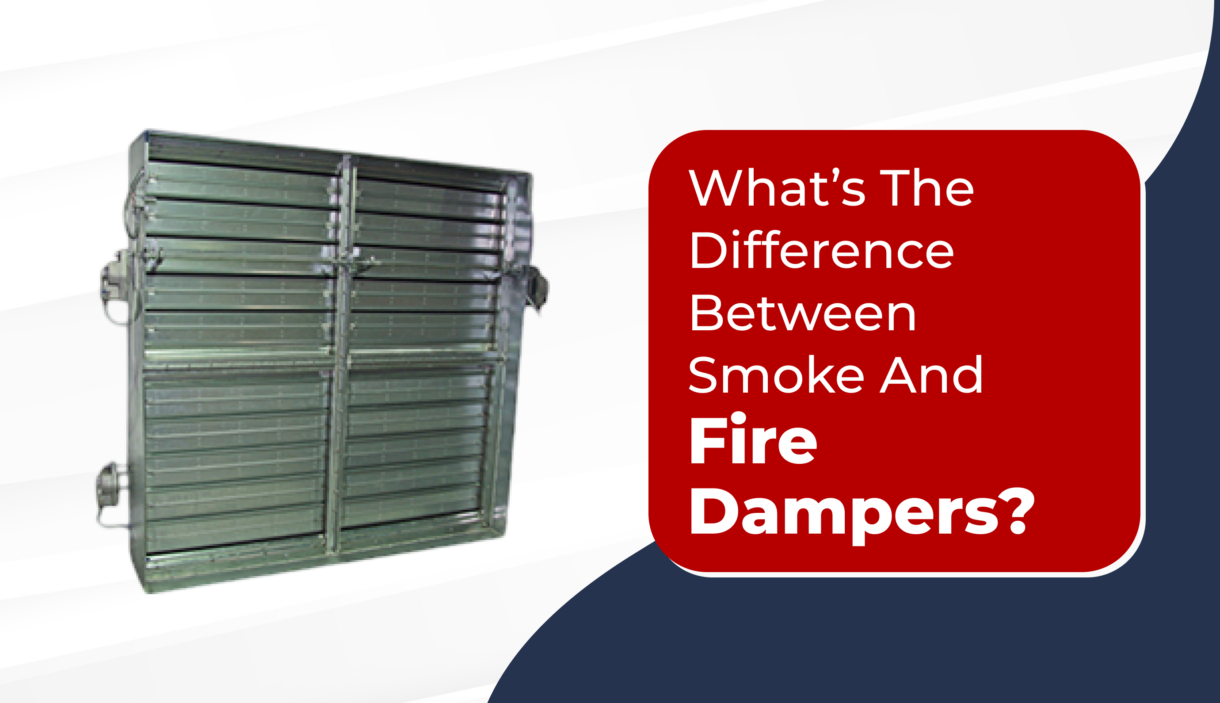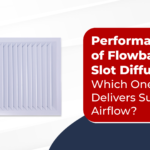What’s the Difference Between Smoke and Fire Dampers?
When it comes to fire safety in HVAC systems, both smoke and fire dampers are essential—but they’re not the same. Each one plays a unique role in protecting buildings and people during a fire. Let’s break down the differences and understand why you need both in your system
Understanding Fire Dampers
Fire dampers are designed to stop the spread of flames through ducts. They’re placed where the duct passes through a fire-rated wall or floor. When the temperature rises during a fire, a heat-sensitive link inside the damper melts. This triggers the blades to close, blocking the fire from spreading.
Key highlights:
- Activated by heat
- Operates automatically (no power needed)
- Helps contain flames
- Installed at fire-rated barriers
Understanding Smoke Dampers
Smoke dampers control the movement of smoke, which is often more harmful than flames. They are motorized and work with smoke detectors. When smoke is detected, the damper closes to stop it from traveling through the duct system.
Key highlights:
- Activated by smoke sensors
- Motorized and linked to detection systems
- Prevents smoke spread
- Protects air quality and evacuation routes
Key Differences Between Fire and Smoke Dampers
Here’s a simple side-by-side comparison to help you understand how they differ:
- Fire Dampers
- Triggered by heat (usually 72°C or more)
- Closes via a fusible link
- Does not require electricity
- Main purpose: block flames
- Installed in fire-rated walls or floors
- Triggered by heat (usually 72°C or more)
- Smoke Dampers
- Triggered by smoke detectors
- Closes via motor or actuator
- Needs power to operate
- Main purpose: control smoke movement
- Installed in smoke-rated partitions or air ducts
- Triggered by smoke detectors
You’ll also find combination dampers, which serve both functions when space or regulations require dual protection.
Why Both Are Important
In an emergency, smoke and fire behave differently. Fire spreads more slowly but causes structural damage. Smoke travels faster and can be toxic. That’s why a complete HVAC safety system includes both damper types to ensure full protection.
Having both:
- Improves evacuation time
- Minimizes property loss
- Ensures code compliance
- Saves lives in critical moments
Where to Install Each Damper
- Fire dampers: Where ducts cross fire-rated walls or slabs
- Smoke dampers: In ducts or zones that need smoke control
- Combination dampers: Where both fire and smoke risks are high
Choose Air Master for Safety and Support
At Air Master, we offer a wide range of certified smoke, fire, and combination dampers. Our solutions are trusted in hospitals, hotels, malls, airports, and commercial buildings across India and the Middle East.
We provide:
- High-performance, tested products
- Expert consultation for selection and installation
- Compliance with IS, UL, and NFPA standards
- On-time delivery and support for your projects
Conclusion
Smoke dampers and fire dampers may look similar—but their functions are very different. Both are essential to a safe and compliant HVAC system. By installing the right dampers in the right places, you help protect lives, reduce damage, and meet safety standards.
Visit www.airmaster.co.in to explore our range
Contact us today for expert guidance on damper solutions
Air Master – Your Safety, Engineered Right.



